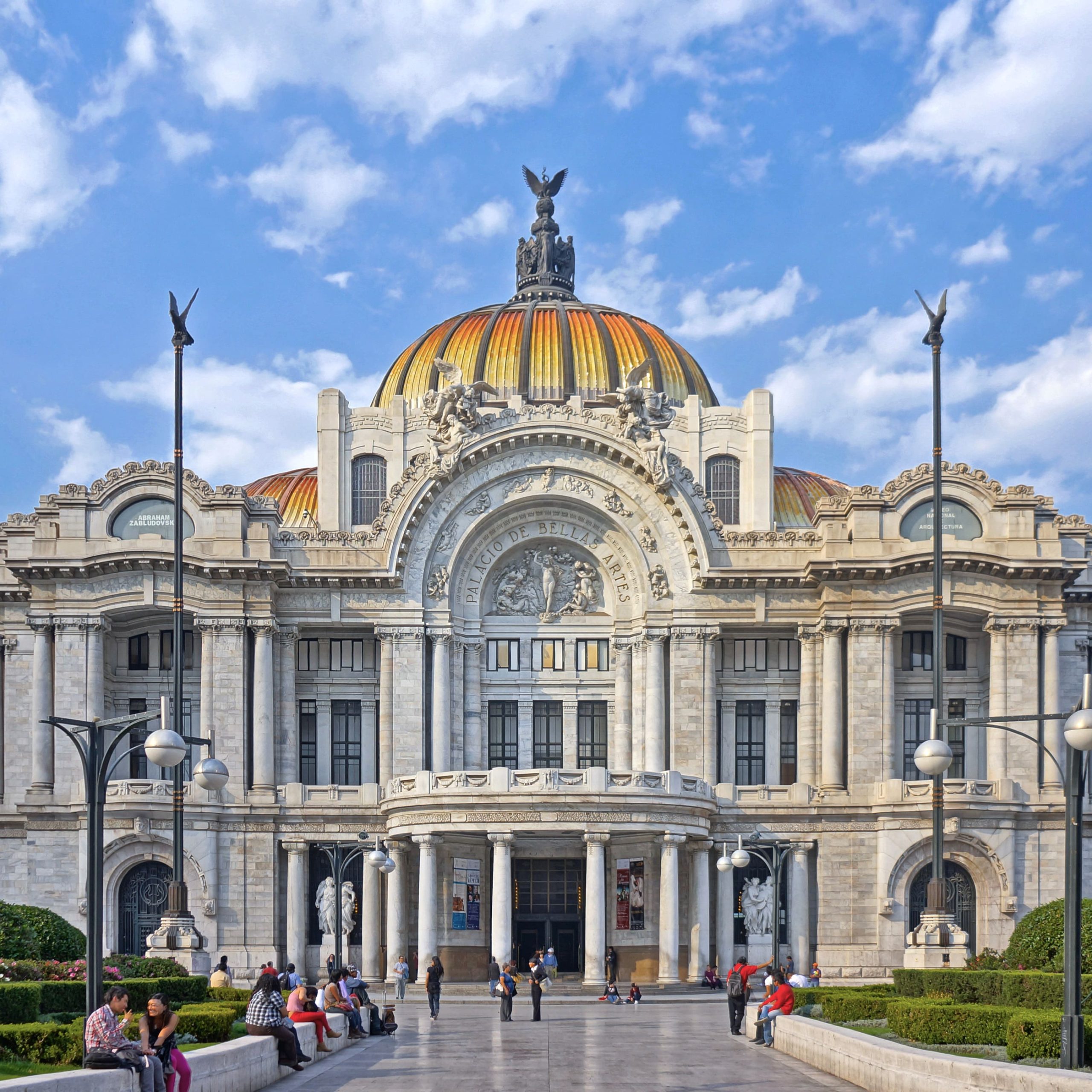
The upper levels of an exquisite palace, crafted from pristine white marble, showcase monumental murals created by renowned Mexican artists—a magnificent concert hall and cultural hub commissioned by President Porfirio Díaz.
Commencing in 1905 under the guidance of Italian architect Adamo Boari, a structure characterized by neoclassical and art nouveau styles began to take shape. The construction faced challenges as the weighty marble structure settled into the soft subsoil, further complicated by the tumultuous period of the Mexican Revolution. Architect Federico Mariscal ultimately completed the interior in the 1930s, embracing the contemporary art deco style. The Palacio de Bellas Artes (Palace of Fine Arts) stands as an extraordinary testament, blending art nouveau externally and art deco internally, establishing its status as one of the era’s most remarkable edifices.
On the second floor, visitors encounter two early 1950s masterpieces by Rufino Tamayo, a painter of Zapotec heritage: “México de hoy” (Mexico Today) and “Nacimiento de la nacionalidad” (Birth of Nationality), symbolizing the genesis of the mestizo identity.
At the western extremity of the third floor, Diego Rivera’s renowned “El hombre en el cruce de caminos” (Man at the Crossroads) takes center stage. Originally commissioned for New York’s Rockefeller Center, the Rockefellers ordered its destruction due to its anti-capitalist themes. Rivera resurrected the mural here in 1934.
On the northern side, David Alfaro Siqueiros presents the three-part “La nueva democracia” (New Democracy), alongside Rivera’s four-part “Carnaval de la vida mexicana” (Carnival of Mexican Life). To the east, José Clemente Orozco’s “La katharsis” (Catharsis) vividly portrays the conflict between humankind’s ‘social’ and ‘natural’ facets.
The fourth-floor Museo Nacional de Arquitectura hosts dynamic exhibitions on contemporary architecture. Additionally, the palace hosts compelling temporary art displays.
The recently refurbished Bellas Artes theater stands as a masterpiece in itself (accessible only during performances). A stained-glass curtain, portraying the Valle de México and designed by Mexican painter Gerardo Murillo (Dr Atl), was meticulously assembled by New York’s Tiffany & Co from nearly a million pieces of colored glass. The theater serves as the backdrop for seasonal opera and symphony performances, as well as the Ballet Folklórico de México.
Tickets and Information Admission is M$75 for adults, with free entry for those under 13 or individuals with disabilities. On Sundays, both foreigners and Mexican nationals enjoy free admission. Ticket reservations are not available online; they must be purchased on the day from the museum ticket office. For a panoramic view, the café terrace of the Sears building across the road offers a lofty vantage point of the Palacio.